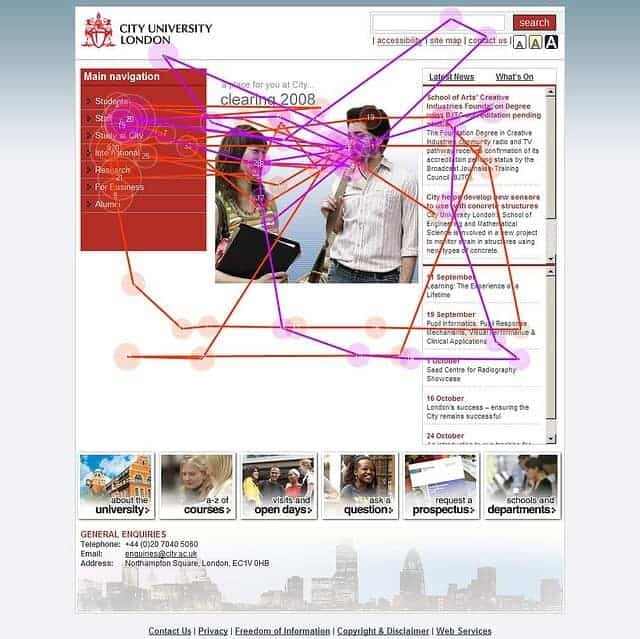Throughout the world of web design and web usability eye-tracking studies are commonplace. They use special equipment which shows where our eyes go around a page. Designers use such studies to help them work out where to place things on a page. However, there are serious issues with eye tracking studies which are brought into focus with a new study on human attention.

One of the major issues with website eye tracking studies, for instance, is that consistent research using these techniques shows that almost no-one ever looks at the right hand column on a Google web search results page. So how come Google earns over $60bn a year out of people clicking on those links? If they didn’t see them, they wouldn’t click on them.
Also, when you ask people to recall what they see on a web page they often report things which the eye tracking studies show conclusively they did not look at. How can they remember things if they didn’t look at them?
For years, psychologists have wondered about attention and our visual system and the argument has always been that there is such a rich amount of information in our field of view at any one time we can only really pay attention to what we focus on. It has long been argued that our “working memory” cannot cope with all the visual information we see and therefore we have to eliminate material from our conscious attention, dealing only with what matters at any given time. This is the theory behind much usability research, such as in the design of car dashboards and aircraft control systems.
However, some fascinating new research using a brand new technique has blown off the lid on this theory – and perhaps shows why we click on those Google adverts without ever seeing them, or can remember things from a web page that we have not looked at.
The research showed that people can recall material they were not asked to look at, but which was in their field of view. And when they recall that additional visual information it does not affect their recall of the item to which they were paying conscious attention. In other words, we do remember things which we are not paying conscious attention to and for which our eyes fix their gaze.
This new research confirms earlier studies which show that our peripheral vision pays a much greater role than previously thought.
For web designers this is all crucial information. It means that whilst eye tracking studies can help, the information they provide should not be taken as the “be all and end all”. It seems that anything and everything on a web page is seen, even if visitors are not consciously aware of it. They will recall it.
And that means you cannot have things on a web page which could cause problems. Adverts, for instance, which do not get much visual attention are still seen by people, even if your eye tracking studies say otherwise. And that means if those adverts do not have some kind of congruity with your message of your web page you could lead to cognitive dissonance – in other words people get confused and misunderstand your message.
Eye tracking helps – but it is the complete picture of your web page that is the most important to consider.
